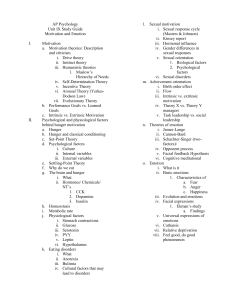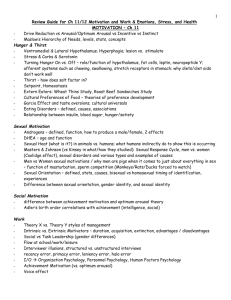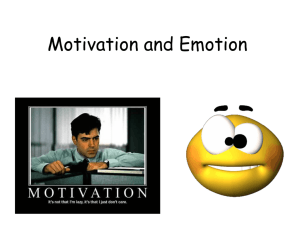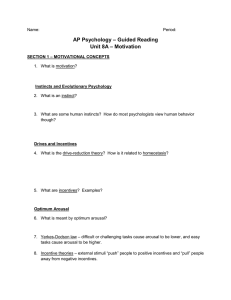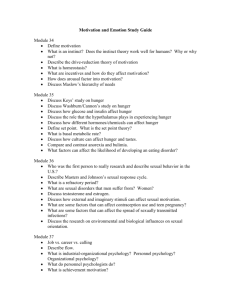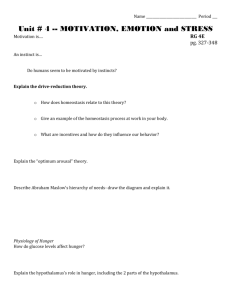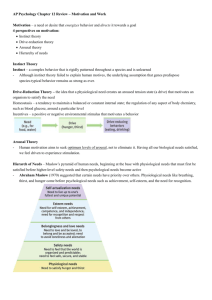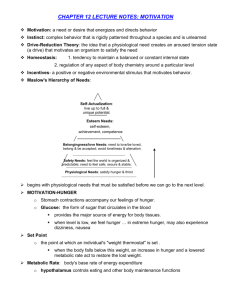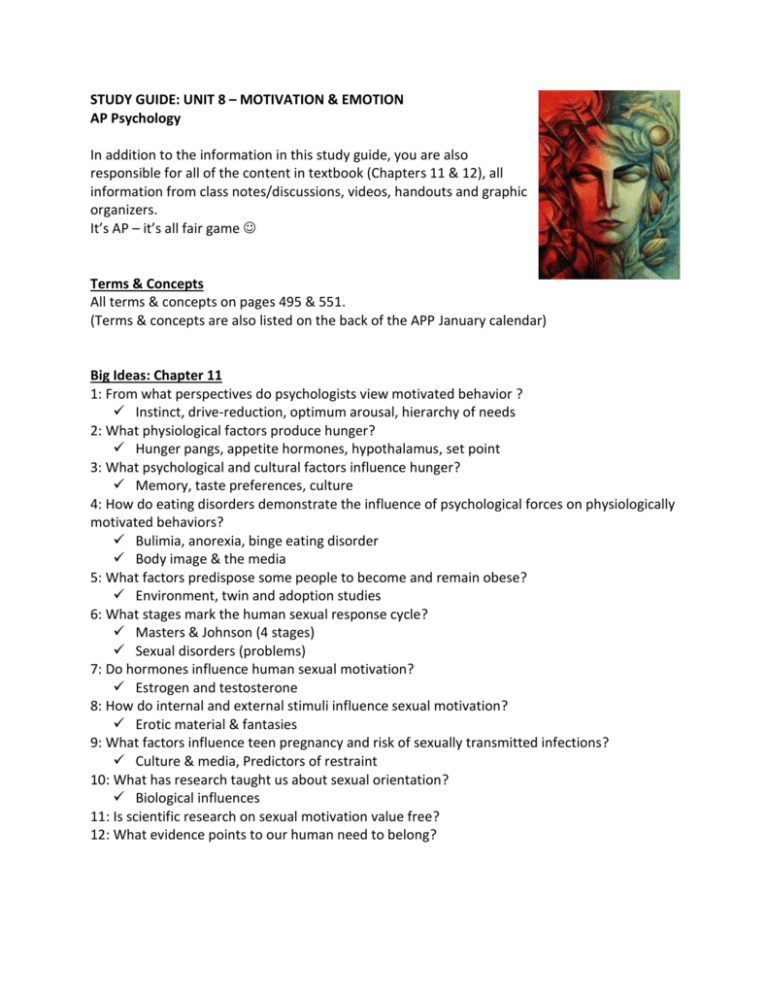
STUDY GUIDE: UNIT 8 – MOTIVATION & EMOTION
AP Psychology
In addition to the information in this study guide, you are also
responsible for all of the content in textbook (Chapters 11 & 12), all
information from class notes/discussions, videos, handouts and graphic
organizers.
It’s AP – it’s all fair game
Terms & Concepts
All terms & concepts on pages 495 & 551.
(Terms & concepts are also listed on the back of the APP January calendar)
Big Ideas: Chapter 11
1: From what perspectives do psychologists view motivated behavior ?
Instinct, drive-reduction, optimum arousal, hierarchy of needs
2: What physiological factors produce hunger?
Hunger pangs, appetite hormones, hypothalamus, set point
3: What psychological and cultural factors influence hunger?
Memory, taste preferences, culture
4: How do eating disorders demonstrate the influence of psychological forces on physiologically
motivated behaviors?
Bulimia, anorexia, binge eating disorder
Body image & the media
5: What factors predispose some people to become and remain obese?
Environment, twin and adoption studies
6: What stages mark the human sexual response cycle?
Masters & Johnson (4 stages)
Sexual disorders (problems)
7: Do hormones influence human sexual motivation?
Estrogen and testosterone
8: How do internal and external stimuli influence sexual motivation?
Erotic material & fantasies
9: What factors influence teen pregnancy and risk of sexually transmitted infections?
Culture & media, Predictors of restraint
10: What has research taught us about sexual orientation?
Biological influences
11: Is scientific research on sexual motivation value free?
12: What evidence points to our human need to belong?
Big Ideas: Chapter 12
1: What are the components of an emotion?
James-Lange, Cannon-Bard, Two-factor theories
2: What is the link between arousal and the autonomic nervous system?
3: Do different emotions activate different physiological and brain-pattern responses?
4: To experience emotions, must we consciously interpret and label them?
Schachter & Singer, spillover effect
5: How do we communicate nonverbally?
Universal nonverbal language, gender differences
6: Are nonverbal expressions of emotion universally understood?
7: Do our facial expressions influence our feelings?
8: What is the function of fear and how do we learn fears?
Adaptive, prediagnosed vs. learned fears
9: What are the causes and consequences of anger?
Catharsis, culture & gender differences
10: What are the causes and consequences of happiness?
Feel-Good, Do-Good Phenomenon, Adaptation-Level Phenomenon, Relative Deprivation
Predictors of happiness
11: What is stress?
Adaptive vs. maladaptive
12: What events provoke stress responses?
13: Why are some of us more prone than others to coronary heart disease?
Type A vs. Type B personality
Chronic stress
14: How does stress make us more vulnerable to disease?
15: What factors affect our ability to cope with stress?
Problem-focused coping, emotion-focused coping
Perceived control, explanatory style
16: What tactics can we use to manage stress and reduce stress-related ailments?
Aerobic exercise, relaxation, meditation
Spirituality & faith

